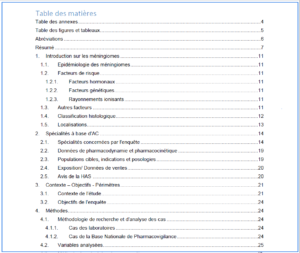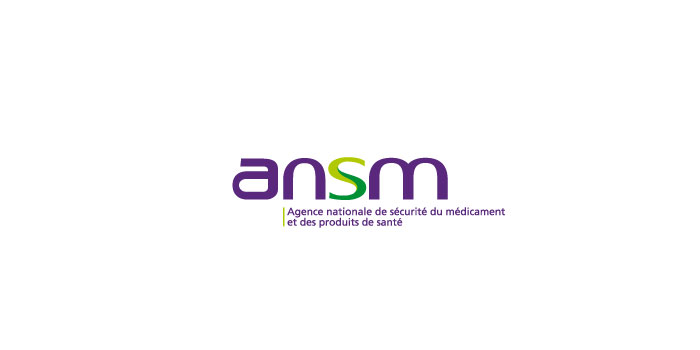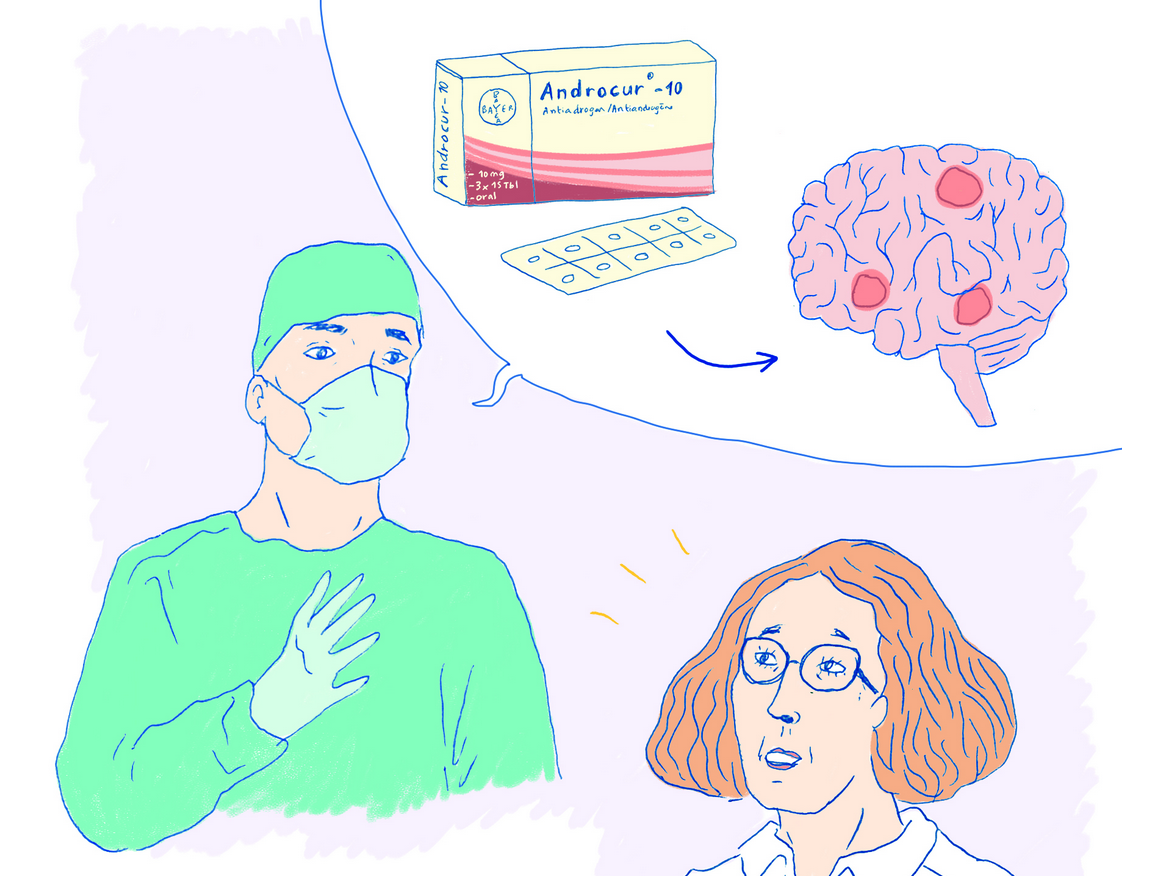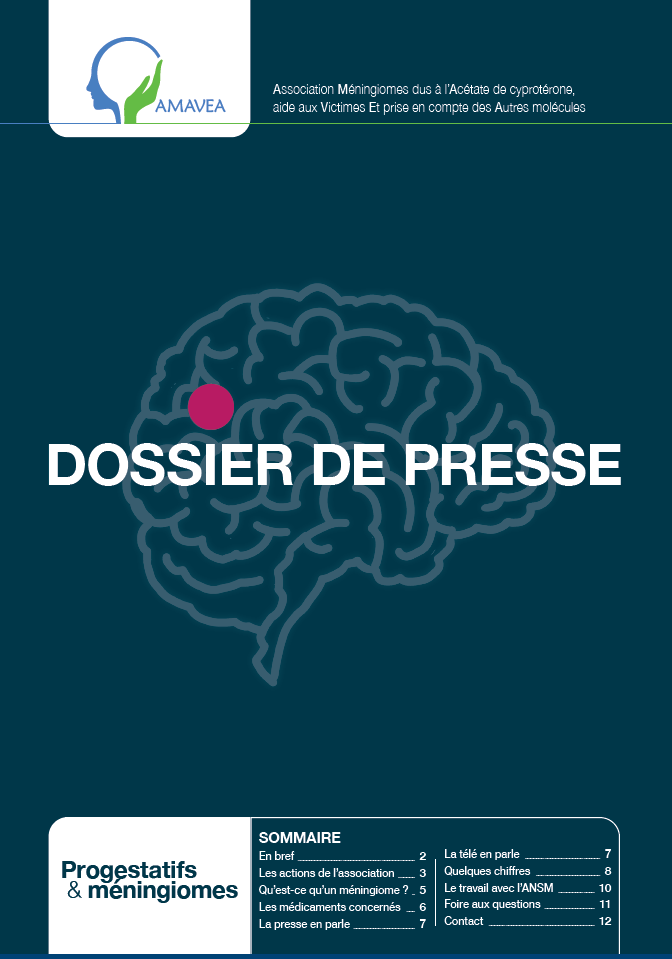Meeting of June 18, 2019 at the ANSM: presentation of two studies, epidemiological and pharmacovigilance, on the Androcur and Meningioma link.

During this meeting, in which we were able to participate, two studies were presented: studies conducted on the link between the capture of Androcu R (Cyproterone acetate) and the development of Méningiome .
These two studies relate to epidemiology and pharmacovigilance. This meeting is part of a monthly technical meeting of CRPV ( pharmacovigilance centers), a usually closed meeting to non-professional. This meeting was exceptionally open to associations and groups, which were able to actively participate, a question beach of questions having been offered to them.
Participants:
- Many pharmacists from pharmacovigilance centers
- ANSM representatives
- Representatives of associations including Nathalie Grillot for the Amavea association
Presentation of the CNAM study by Mr. Alain Weil
"Prolonged exposure to cyproterone acetate in high doses and risk of meningioma »
Meningioma % of cases with slow growth of 2 to 3 mm per year. The number of people developing meningioma (in a standard population) is 8 per 100,000 per year or 5,000 people in France. Risk factors: age, female sex, people who have had an ionizing radiation treatment. Women are a population more at risk because the brain envelope) have progesterone receptors. The receptivity to cyproterone acetate ( Androcur ) is higher in the second phase of the menstrual cycle, but also during pregnancy.
The treatment of the tumor, if its mass has developed too much, is often surgery (excision which consists in removing the whole tumor and decompression when the whole tumor is not removed) but other treatments exist if it cannot be operated such as radiosurgery or radiotherapy.
The size of the tumor and its location are important with respect to treatment.
Scientific literature (from 2007 to 2016, 9 studies on the subject) showed that people under
Cyproterone acetate often develop multiple meningioms. When stopping
cyproterone acetate, meningiomas regress or stop growing.
Taking into account the volume of the tumor is important rather than talking about its diameter.
Methodology
This is a "exposed/non -exposed" type cohort study carried out from the national health data system (SNDS - formerly called Sniiram). It compares the frequency of occurrence of treated meningioma (event of interest) in women aged 7 to 70 years exposed to cyproterone acetate in high doses (defined as at least 3 boxes, or 3 grams, during the first 6 months) and in those having been very weakly exposed (1 or boxes during the first six months).
The main study ("incident" cohort in terms of exhibition) concerned women who have started cyproterone acetate (tablets at 50 mg or 100 mg) between 2007 and 2014 with follow -up until the end of 2015. An additional analysis ("prevalent" cohort) concerned women already exposed to cyproterone acetate in 2006 (year the oldest Followed until the end of 2015.
The event of interest was defined by the care in hospitalization of cerebral meningioma by a neurosurgery of excision, decompression or radiotherapy. The comparisons were made from proportional risk models comparing the incidence of events between the different groups: presentation, very weakly exposed for the main and exposed analysis, very weakly exposed and stop for sensitivity analysis.
Results
The establishment of cyproterone acetate between January 1, 2007 and December 31, 2014 concerned 279,678 women.
Among women already exposed in 2006 to cyproterone acetate ("prevalent" cohort including 131,485 women), we observed, in presentations at least 3 grams after 2006, 485 cases of meningiomas taken care of in hospital for invasive therapeutics (neurosurgery, radiotherapy). In this cohort the incidence rate (absolute risk) reached 133 per 100,000 women-years. As for the "incident cohort", there was a strong dose-effect relationship.
Among the 516 women exposed to cyproterone acetate and hospitalized for meningioma, 96.0 % were the subject of neurosurgical intervention of tumor excision and 4.0 % were processed by radiotherapy.
The average age during the treatment was 48.1 years,
at least 500 can be estimated at the minimum in the 2006-2015 decade the number of cases of meningomes operated or treated with radiotherapy attributable to prolonged exposure to high-dose cyproterone acetate. This estimate excludes meningiomas followed and medically monitored without invasive gesture.
This study also provides precise information on the location of meningiomas (mainly anterior floor of the skull base and the average floor of the skull in general and the internal third of the average floor of the spheno-orbital angle).
Finally, the number of women treated by cyproterone acetate between 2006 and 2014 - more than 400,000- confirms, with the absence in 85% of the cases of biological explorations compatible with a hirsutism, very wide use outside AMM .
The continuation of studies from SNDS is necessary to measure the impact of the actions carried out, but also the risk with other progestins likely to be used in relay of cyproterone acetate.
The full report of this study is available on the ANSM website: Cyproterone acetate (Androcur and its generics) and risk of meningiom: publication of the full report of the pharmaco-epidemiology-information point of information
Pharmacovigilance survey
The presentation of the pharmacovigilance survey was made by CRPV rapporteurs. Clinical studies make it possible to deepen pharmacovigilance surveys and are therefore a crucial step in understanding the problem.
In 2014, the link between cyproterone acetate ( Androcur ) and Méningioma was not clearly established. The CNAM survey made it possible to validate the link. Pharmacovigilance surveys focused on the period 01/01/2014 at 31/10/2018 then update until 01/01/2019, with 298 patients in the study including 11 men. 151 patients said they had an intervention, we don't know for others. 52 % come from the declaration made by patients, 70 % of whom were medically confirmed. People were exposed for about 15 years with cumulative doses of around 219,000 mg.
We do not note risk factors compared to family history
. We note that the number of tumors is linked to the number of years of exposure and therefore with the increase in the cumulative dose.
Please note : there is a significant risk of developing meningioma in case of pregnancy . It would be necessary to do a control MRI before.
It should be noted that the CRPV survey has a qualitative approach, macroscopic data being held by health insurance. And CRPV surveys are based on declarative, with the limits that this has (that is, among other things, the fact that some declarants do not want to answer additional questionnaires).
Isabelle Yoldjian intervention (ANSM)
The ANSM has been working on this file since 2016, the CNAM study will soon be the subject of a publication in a scientific journal. The epidemiological study could not be done before 2016 because there was not enough data in the bases which only exist since 2007.
It is not possible to do a study on Diane 35 because it is not a reimbursed product so we do not have the data.
In Europe, 60 % of AC prescriptions are made in France.
The history of the ANSM alerts was presented: Cyproterone acetate ( Androcur ) has not been deleted in France because of its usefulness in cases of major hirsutism (SOPK).
Patients do not go from MRI to stopping treatment if there are no clinical signs because the risk drops after stopping. Following the information documents, the ANSM thinks that the drop in sales (currently 50%) will be even more pronounced.
letters on Androcur are sent to more than 80,000 patients as well as prescribers.
July 1 : Beginning of the implementation of the patient/doctor agreement for the start of treatment
1, 2020 : Agreement for current treatments at
the end of 2019: results of the epidemiological study for other progestins ( Luteran and Lotényl )
The ANSM has published an information point concerning this meeting: Cyproterone acetate (Androcur and its generics) and risk of meningiom: results of the pharmacovigilance survey - Information point .
In this information point, you will find the complete study of pharmacovigilence.
Find the other Amavea articles here





